When looking to buy your dog a new harness, collar, or winter-ready dog coat, you will always need to know your dog's measurements. While it might be tempting to select a product size based on your best guess, this can lead to unnecessary and time-consuming exchanges or returns down the road.
Even within the same breed, not all dogs are shaped the same. Many french bulldogs are thick-set and well-muscled, while other frenchies are more slender and petite. Some dachshunds have exceptionally large, robust chests, while other sausage dogs have a more svelte and lean frame. Medium dogs do not always fit into medium dog coats. This is something you may not realize if you are picking out dog apparel or accessories like harnesses and collars for the first time.
Dog apparel outfitters like Django use a few key dog measurements in their size charts: chest girth, neck girth, back length, and height (also known as "withers"). Not sure what some or all of these mean?
We (Steph and Mike) know that measuring your dog for harnesses, clothes, pet carriers, and shoes is confusing and may make you want to hide your measuring tape. In this DJANGO Dog Blog article, we cover how to correctly measure your dog's neck girth, chest girth, back length, height, and paws.
How to Measure Dog Neck Girth
When you are buying a collar and leash, you need to know your dog’s neck circumference. Even if it is an adjustable collar, your dog's measured neck size still has to fit within the stated neck girth range. For example, if your dog's neck measures 13 inches, order a 12 to 16 inch adjustable collar.
To measure your dog’s neck girth, take soft measuring tape or printable measuring tape and loop it around your dog's neck. Make sure the measuring tape is placed between your dog’s shoulder blades and the top of his chest. Pull the tape so that it is snug but not too tight. If you do not have a tape measure, you can use a piece of string and then measure the string with a ruler or yardstick afterwords. You can also measure your dog’s current collar from the end of the buckle to the exact hole that is being used.
Keep in mind that when your pup sits down or rolls over, his skin and body fat are redistributed. A dog collar that fits when he is standing up might be too tight when he lies down. Take a few measurements when your dog is positioned differently to ensure proper fit.
You never want a collar to be too snug around your dog's neck, so use the “two-finger rule”. Once you fasten your dog’s collar, you should be able to easily slide two fingers under it.
Another way to ensure the collar isn't too snug is to follow this method. If your dog is a small breed that is under 20 pounds, add an inch to his neck size. Add two inches if he is a medium breed between 23 and 58 pounds. If your dog is large (59 to 99 pounds) or extra-large (100 pounds or more), add three inches to his collar size.
Is your dog’s collar between sizes? Choose the larger one.

How to Measure Dog Chest Girth
When looking to buy a new dog harness or dog coat, you will need to know your dog's chest girth. Chest girth is the measurement around the largest part of your dog’s rib cage, usually just behind the front legs.
To measure chest girth, start by holding one end of measuring tape on your dog's spine. While your dog is standing, wrap the tape behind your dog's front legs and around his body. Do not measure right under your pup's armpits unless this is the widest part of the waist. Place the end of the measuring tape next to the beginning; where it crosses is your measurement. To get the right amount of snugness, use the "two finger rule" and place your pointer and middle finger between the measuring tape and your dog.

How to Measure Dog Back Length
For dog coats, dog hoodies, dog raincoats, and doggy lifejackets, you will need three measurements: neck, chest, and back length. Find your dog’s back length (or topline) by placing the start of your tape measure on the base of your dog's neck. The base of your dog's neck is where a collar would sit naturally. Hold the tape measure in place with one hand, then pull the tape straight across your dog's spine until you reach the base of the tail.
Do you have a male dog? If yes, you may need to slightly shorten the measurement depending on the fit of the apparel item. If the coat or hoodie you are buying is not shaped to avoid doggy messes (i.e. the underbelly of the apparel item should be shorter than the back length of the apparel item), there's a chance your dog will pee on it. Not sure what we mean? Check out DJANGO's dog hoodies which are internationally designed to avoid any mess during bathroom outings.

How to Measure Dog Height
When shopping for a dog carrier bag, you will need to know your dog’s back length and height. For hard-sided pet carriers, add three-to-five inches to your dog's height to ensure he has enough room to be comfortable. For soft-sided pet carriers, add two-to-three inches. Brands will often provide appropriate weight ranges for their pet carriers as well, but knowing your dog's exact back length and height will ensure the best size is selected.
To measure your dog’s height, make sure that he is standing straight against a wall. His feet should be evenly spaced out on the floor. Smaller dogs are more excitable and getting them to stand still can be a hassle. With another person's help holding your dog, consider taking your pup's height measurements on a table so there's no place for your dog to go.
Start by feeling for your dog’s withers. This is the highest point of your dog's shoulder blades and where the shoulder blades and neck meet. It is the tallest point on your dog's body (excluding his head). Run the measuring tape from the floor to your dog’s withers. Make sure that the tape is straight and perpendicular to prevent measuring errors. The withers on short-haired dogs, such as French bulldogs and corgis, are easier to find.
You can also place a carpenter’s level where your dog's shoulders are the highest. Make sure one end of the level touches the wall. Then mark its bottom with a pencil. Don’t want to write on your wall? Use sticky putty or clear tape. You can also measure your pooch in front of the refrigerator and use a magnet to mark the spot.

How to Measure Dog Shoe Size
Dog shoes and boots can range from XXX-Small at 1.5 inches across the widest part to XXX-Large at 3.5 inches. Because your dog’s paws may be different sizes, you will need to measure each one individually. To get an accurate measurement, trim his toenails.
Place your dog’s paw on a piece of paper and gently press the paw down with your fingers. This mimics how his paw spreads when he walks. Mark the front and back of his paw, including his toenails, with a pencil. Then measure the distance between the lines.
You can also wet your dog’s paw and press it down on a sheet of paper. As with the pencil marking technique, make sure it is fully splayed and that you take into account his toenails. If your dog hates water, measure the length and width of his paw with a measuring tape or ruler. Hold it in your hand, making sure that it is fully spread out, and measure the widest part. If your dog's shoe size is between sizes, go up a size.
If you have any questions about measuring your dog, leave a comment or send us a message. We'd love to hear from you and are happy to help you out!
DJANGO's Adventure Dog Harnesses, Collars, and Leashes are designed for rugged adventures and everyday use. DJANGO dog harnesses feature a weather-resistant and padded neoprene exterior with reflective piping, breathable sport mesh lining, supple and colorfast webbing, and four points of adjustment for a custom fit. DJANGO dog collars are made with strong and soft-to-the-touch webbing and feature a beautiful solid cast brass D-ring for leash attachment, ID tag attachment piece, and solid side-release buckle for easy on and off. DJANGO dog leashes include the stylish Standard Adventure Dog Leash and incredibly versatile Adjustable Hands-Free Adventure Dog Leash.

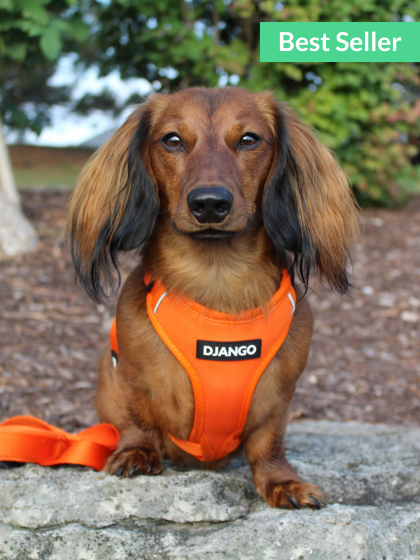
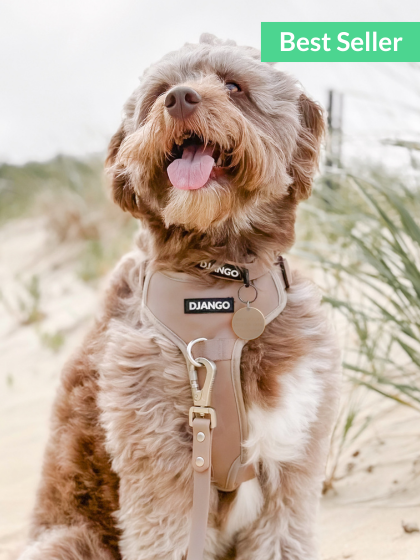
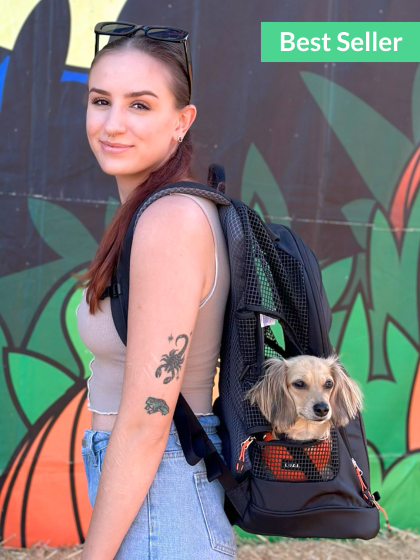
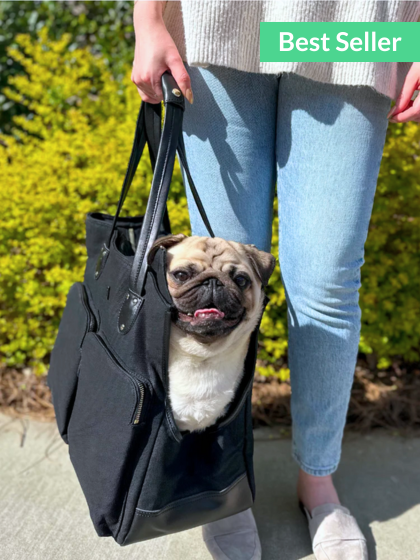
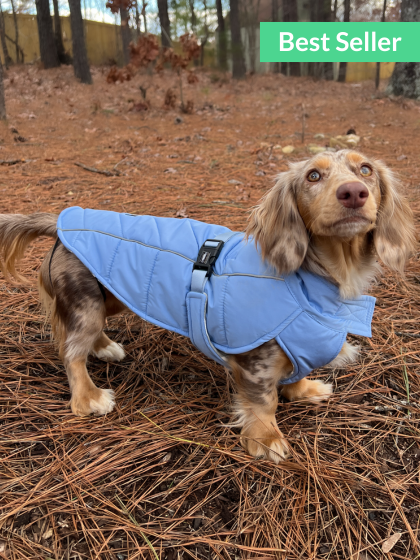
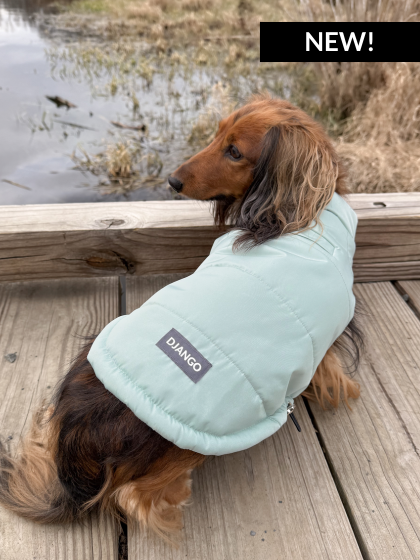
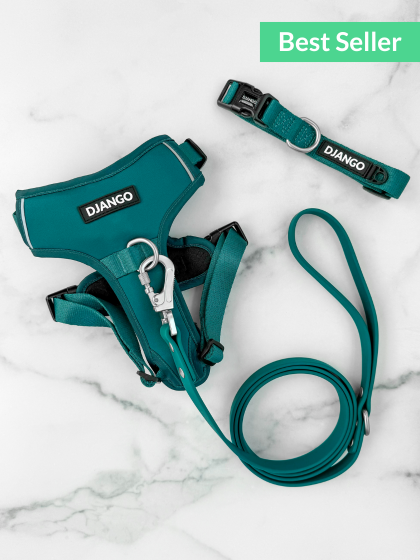
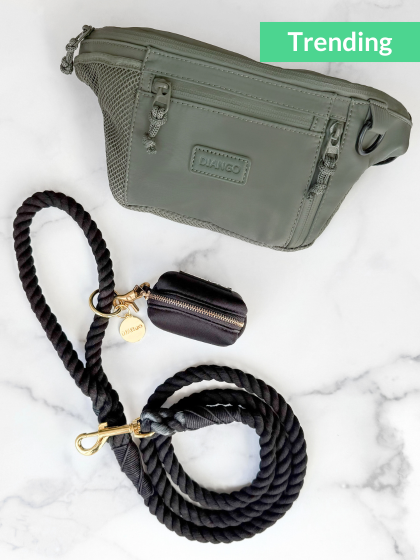
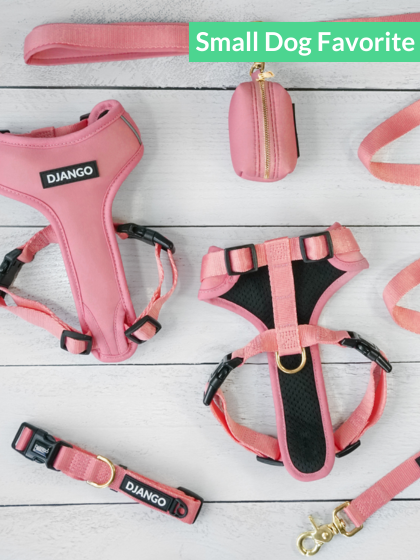
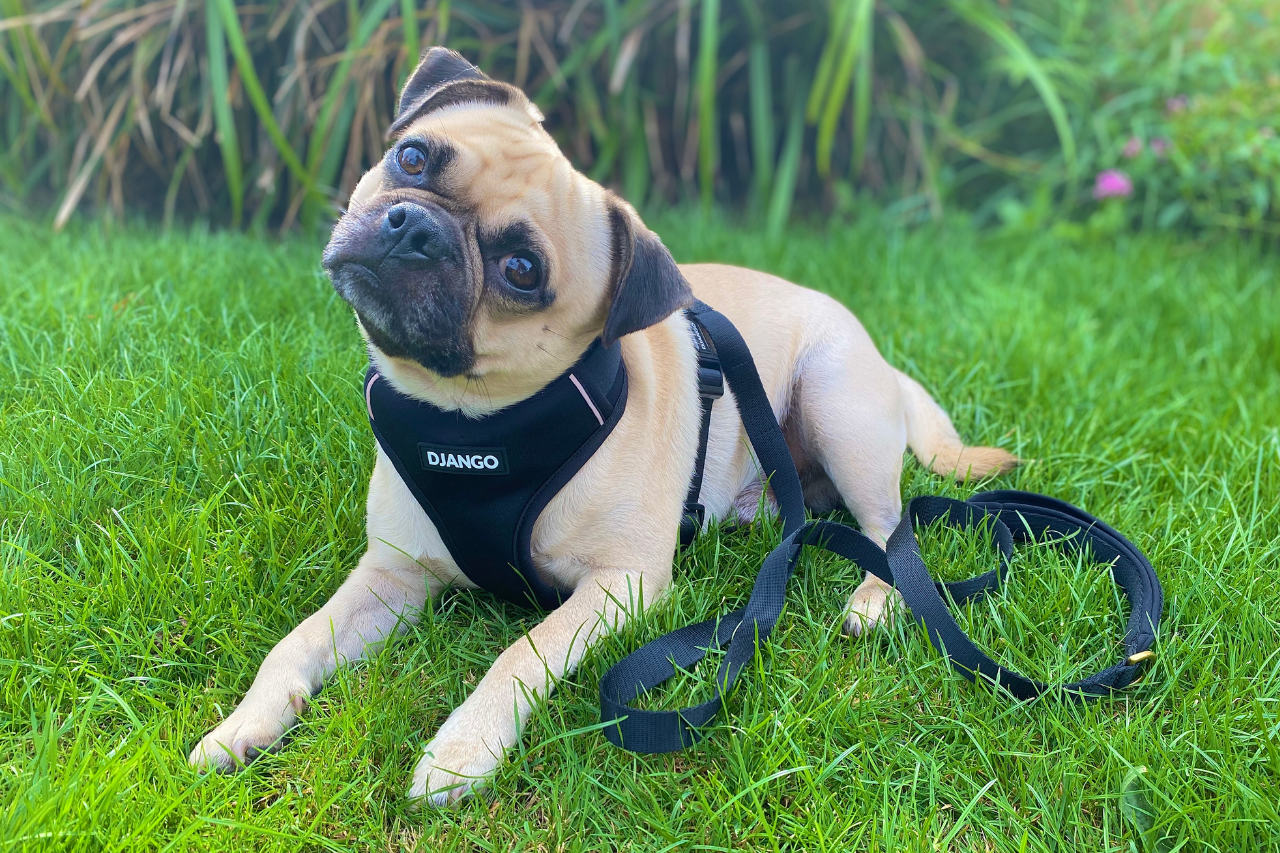

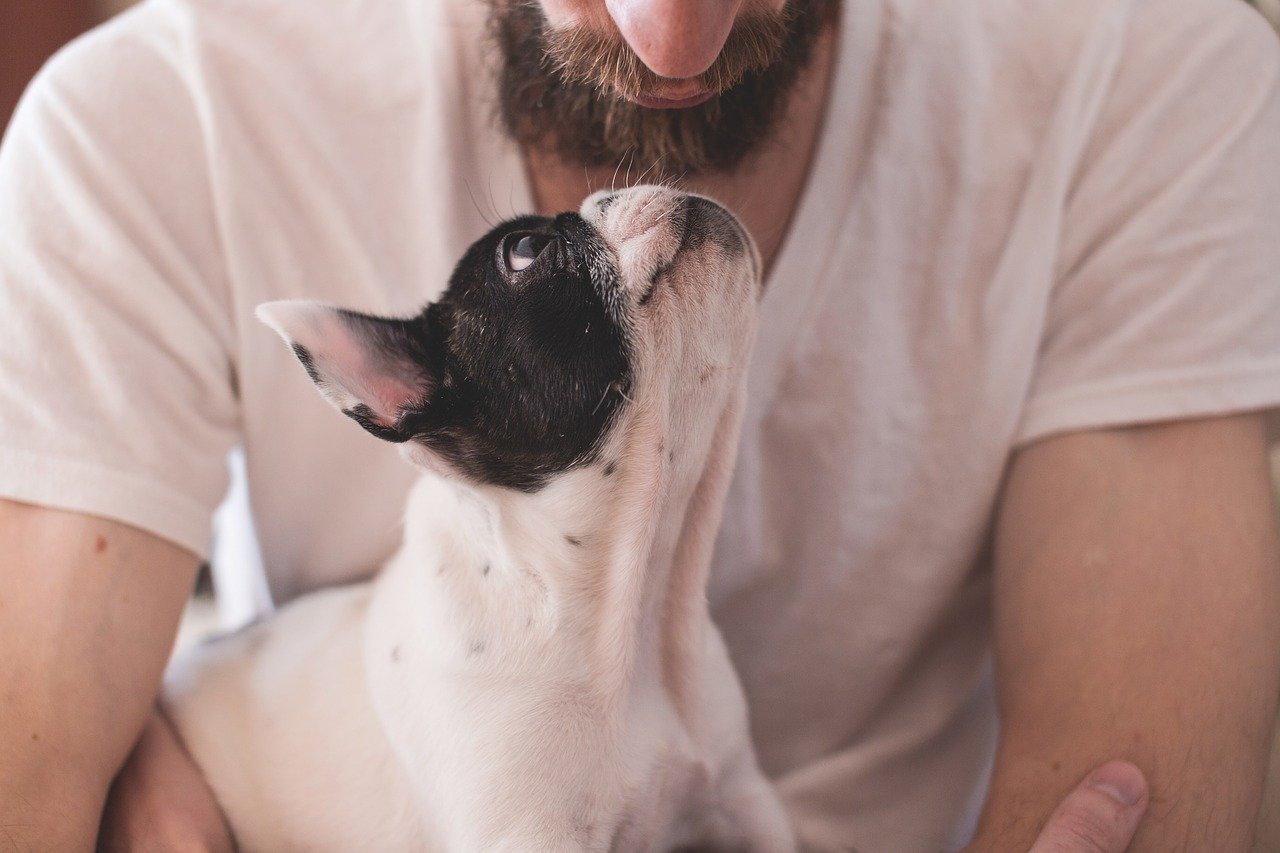

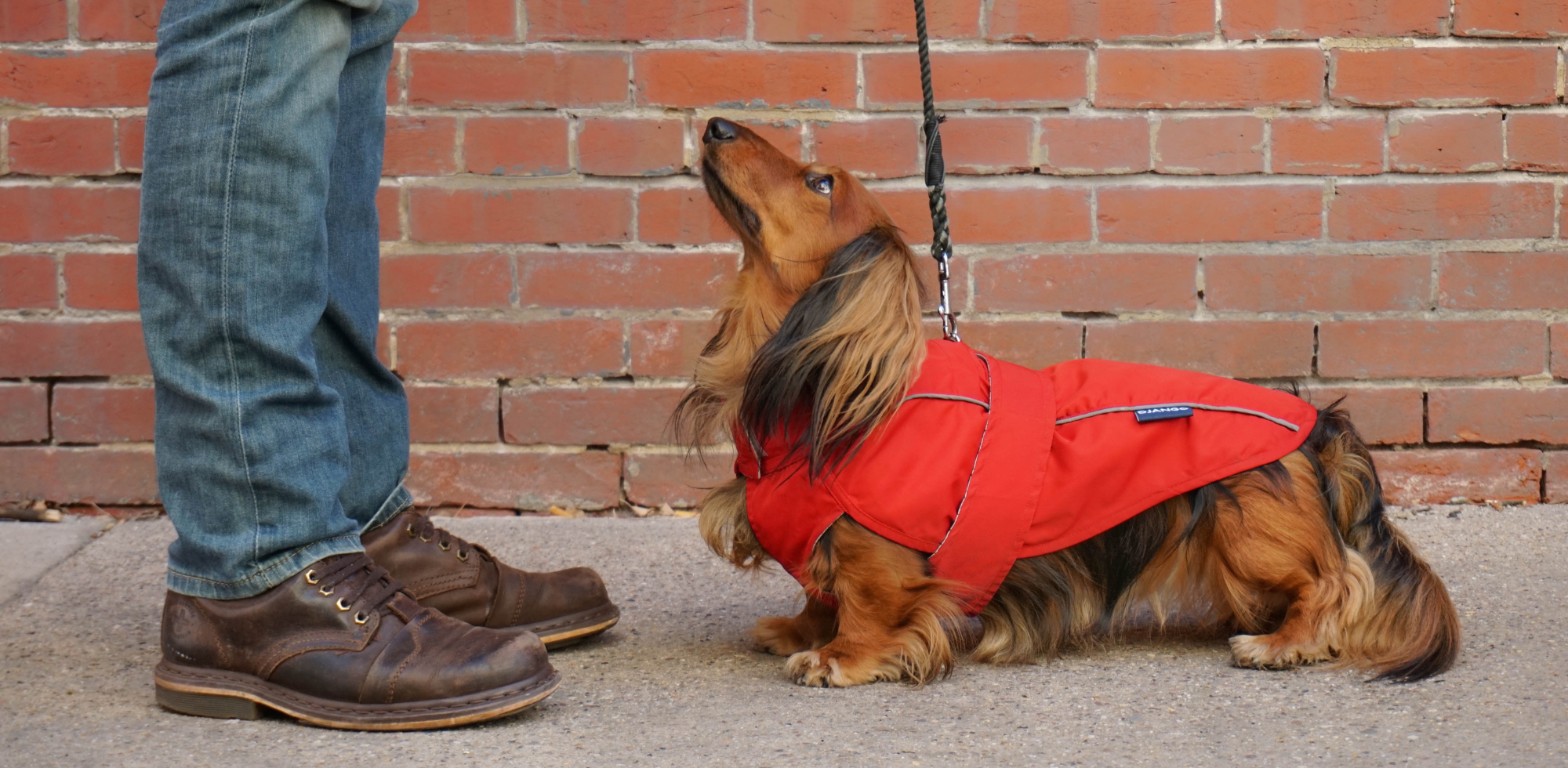
1 comment
NormanWilkes
Thanks for the ultimate guide!
The Dog Hug
Thanks for the ultimate guide!
The Dog Hug